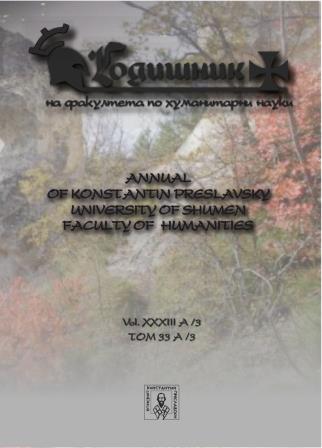СРЕДНОВЕКОВНИТЕ ХРИСТИЯНСКИ ХРАМОВЕ И СКАЛНИ ОБИТЕЛИ ПО ШУМЕНСКОТО ПЛАТО – СВЕДЕНИЯ И ПРОУЧВАНИЯ ОТ ХVІІ В. ДО ДНЕС
MEDIEVAL CHRISTIAN CHURCHES AND ROCK MONASTERIES ON THE SHUMEN PLATEAU - DATA AND RESEARCH FROM THE XVIITH CENTURY TO THE PRESENT
Author(s): Georgi KanchevSubject(s): Christian Theology and Religion, History, Local History / Microhistory, Theology and Religion
Published by: Шуменски университет »Епископ Константин Преславски«
Keywords: archaeological map of the Shumen Plateau; medieval Christian churches; monasteries
Summary/Abstract: The article attempts to present and summarize in a chronological aspect the data and studies related to the medieval Christian churches and monasteries located along the rocky ridge surrounding the Shumen plateau. The sites, that at different times have attracted the attention of many historians and archaeologists, are mostly the abodes associated with the entry of hesychasm into the Bulgarian lands. Evidence has been presented that these were not independent monastic units, but were part of rock hermitages to a monastery or a main church at the foot of the slopes in the ravines of the Shumen Plateau. It can be assumed that the period XII-XIVth century was the apogee of the functioning of the rock monasteries in the Shumen region, but some of them most likely existed in an earlier stage - the Early Bulgarian Middle Ages. The scholarly issues in connection with the model of building of complexes of a main church or monastery and adjoining rock cloisters can be examined in future joined expeditions and research aimed at completing the archaeological map of the Shumen Plateau. The article attempts to present and summarize in a chronological aspect the data and studies related to the medieval Christian churches and monasteries located along the rocky ridge surrounding the Shumen plateau. The sites, that at different times have attracted the attention of many historians and archaeologists, are mostly the abodes associated with the entry of hesychasm into the Bulgarian lands. Evidence has been presented that these were not independent monastic units, but were part of rock hermitages to a monastery or a main church at the foot of the slopes in the ravines of the Shumen Plateau. It can be assumed that the period XII-XIVth century was the apogee of the functioning of the rock monasteries in the Shumen region, but some of them most likely existed in an earlier stage - the Early Bulgarian Middle Ages. The scholarly issues in connection with the model of building of complexes of a main church or monastery and adjoining rock cloisters can be examined in future joined expeditions and research aimed at completing the archaeological map of the Shumen Plateau.
Journal: Годишник на Шуменския университет "Епископ Константин Преславски". Факултет по хуманитарни науки
- Issue Year: XXXIII/2022
- Issue No: 3
- Page Range: 81-98
- Page Count: 18
- Language: Bulgarian

